6 Best Design Courses for Mechanical Engineers in 2026
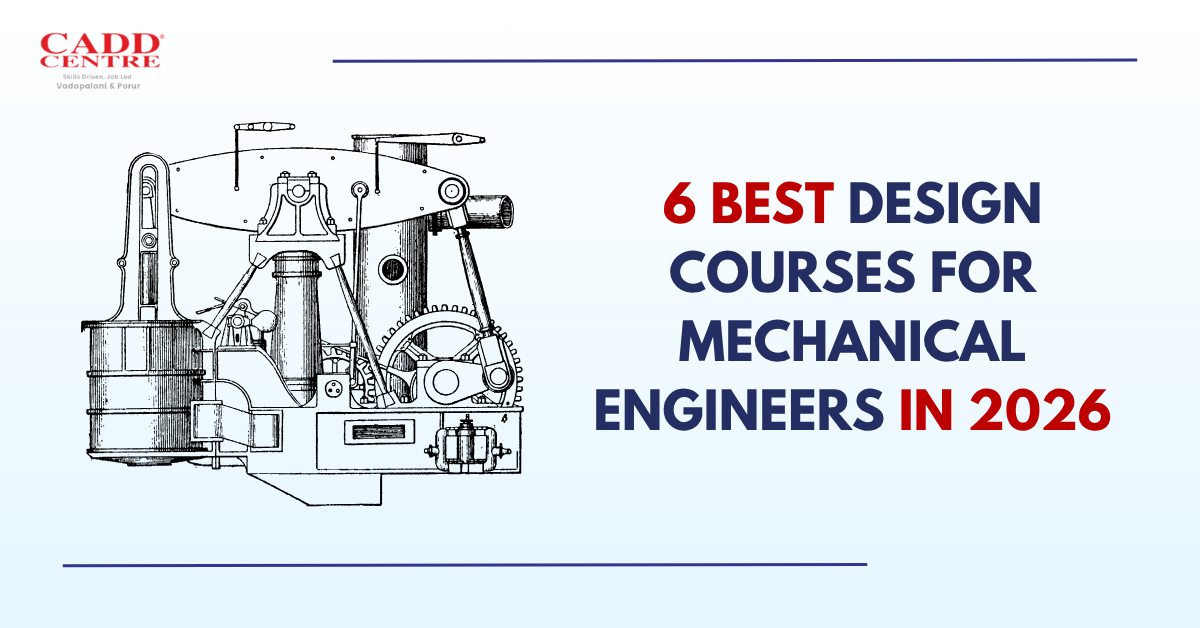
As a mechanical engineer, your ability to design effective, efficient, and innovative systems is key to your professional growth. Mechanical design training courses merge creativity with advanced technical skills, and are the heart of many industries such as automotive, manufacturing, aerospace, and energy. The 6 Best Design Courses for Mechanical Engineers which are listed in our blog can provide the perfect foundation for your career.
Whether you’re looking to break into a specific industry or enhance your skill in current design abilities, investing in the best mechanical design courses is crucial.
These mechanical design classes cover various aspects of mechanical design, offering practical applications and industry relevance to ensure you remain competitive in a constantly evolving field.
What is Design in Mechanical Engineering?
Design courses for mechanical engineering is the development of machines and products to enhance productivity as well as efficiency. The mechanical design classes, unlike creating a new product, also includes improving extant products. Choosing the best design courses for mechanical engineers for upskill and upcoming career is a best choice.

Why are the Mechanical Design Certification Courses relevant to Mechanical Engineering?
The job of mechanical engineers is the functionality, us-ability, and aesthetic appeal of products. Such knowledge and skills in designing meet such functional requirements and are, therefore, imparted in design courses for engineers. A good understanding of mechanical design enables engineers to:
- Optimize product shapes
- Choose proper material
- Calculate loads and strength of the material
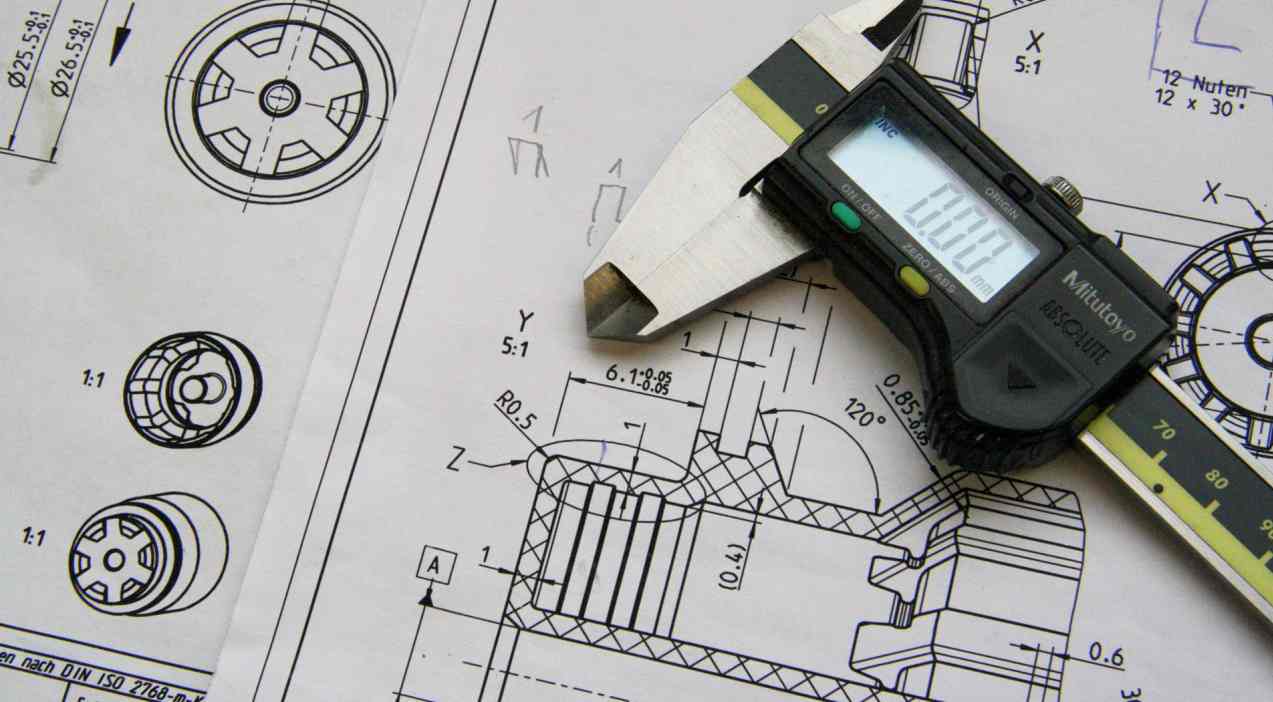
The Design Courses for Mechanical Engineers listed in this blog will provide essential training on effectively communicating designs through detailed drawings during production. Enrolling in these courses will make the engineers update their knowledge and skills so that they will be prepared for the challenges of the real world. The Best Design Courses for Mechanical Engineers can help anyone seeking a better career opportunity.
Factors to Consider While choosing a design software for mechanical engineers?
Some of the main factors to be considered while choosing software for mechanical designers should be concerned with 3D printing tool features so that the tools used are industry standards and support various stages of product development. Here is a detailed explanation of those key features:

1. CAD/CAM capabilities with 3D modeling
Why It Matters: A key ability of any mechanical engineer would be to build 3D models which is fundamental for mechanical engineer. This allows engineers to envision complex structure designs and understand how parts and assemblies can be created in a way that makes certain tolerances achievable.
Key Functions: Look for software with both parametric and direct modeling capabilities. Parametric modeling allows for design adjustments by changing parameters, while direct modeling is more intuitive and flexible for rapid design changes.
2. 2D Drawing and Documentation
Why Does It Matter? While 3D modeling is essential, 2D drafting remains the order of business when it comes to producing technical drawings, blueprints, and schematics used within manufacturing.
Key Functions ; The software should provide accurate functions in drafting 2D technical drawings, annotations, and dimensions that could be exported directly into production.
3. Simulators and analysis tools
Why Does It Matter? Best FEA software Tools: Of course, top-notch FEA tools used in FEA and CFD allow engineers to test their designs under real-world conditions before they ever build a physical prototype. That saves time and costs considerably. But learning AutoCAD Civil 3D training takes your ability to integrate civil engineering with advanced simulations up a notch.
Major Functions Key: Structural analysis (stress, deformation) through FEA and the best CFD analysis software for fluid dynamics (air flow and heat transfer) through CFD is very crucial. These tools allow engineers to predict how a product will operate under the variable loads, temperatures, etc., in the end. With AutoCAD Civil 3D training, engineers can also create more accurate site and project designs, facilitating better integration of simulations into civil projects.
4. Finite Element Analysis (FEA) Integration
Why It Matters: FEA is a critical feature for mechanical engineers working on designs that require structural integrity. It helps evaluate how components will react under physical forces such as heat, vibration, and pressure. Mastering FEA is often part of advanced mechanical design courses, equipping engineers with the necessary skills to ensure robust designs.
Key Functions: Look for FEA integration to allow for stress analysis, deformation analysis, and failure prediction. This feature saves significant time and resources by preventing design flaws early. By utilizing FEA, especially through advanced mechanical design courses, engineers can create more reliable and efficient designs, ultimately leading to enhanced product performance
5. Collaboration and Data Management
Why It Matters: In modern engineering environments, teamwork and collaboration are essential. Design software should facilitate collaboration across departments, especially in large engineering teams.
Key Functions: Features like cloud storage, version control, and real-time collaboration help teams work together seamlessly. Software should also allow easy sharing and review of designs among peers or clients.
By considering these key features, mechanical engineers can choose design software that not only meets their current needs but also supports their ongoing professional development, including skills gained from the Best Design Courses for Mechanical Engineers.
6 Best Design Courses for Mechanical Engineers
Once the advanced mechanical design courses are completed, the opportunities are very vast, providing a way into careers in automotive, aviation, construction, and power generation industries. And now, let's see the best design courses for mechanical engineers:
1. Computer-Aided Design (CAD)
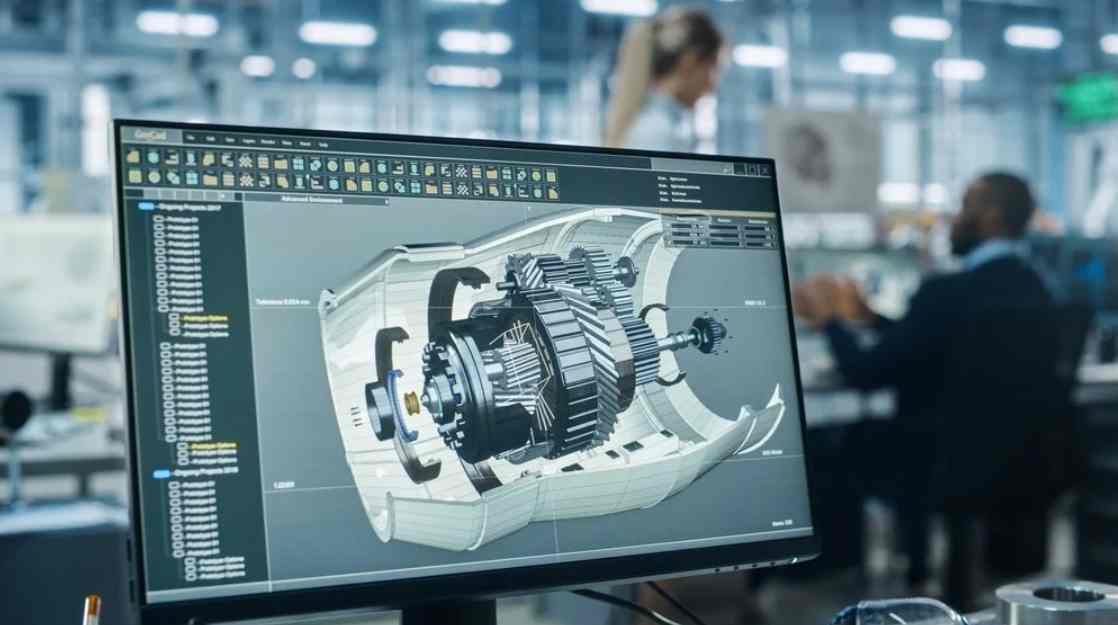
Course Description
- Computer-Aided Design in mechanical engineering is a fundamental tool for a mechanical engineer by way of creating designs, modifying them for analysis and optimization. Industry standard CAD software, which includes SolidWorks, AutoCAD, and CATIA, are used heavily in industry to draw detailed 2D and 3D models of products, parts, and assemblies.
- 2D and 3D Modeling: Learn to create detailed blueprints and models for manufacturing as well as for the purpose of simulation and product development. Most AutoCAD courses for beginners deal with these basic skills.
- Assembly Design: Learn to assemble various components to form a working system that can be validated for real application.
- Rendering and Simulation: Enable highly advanced CAD capabilities to simulate real-world scenarios such as stress, strain, and heat ensuring that designs are robust and also optimized.
Practical Application
Through computer-aided design in mechanical engineering, mechanical engineers make use of it in every major field like automotive, aerospace, and manufacturing. For instance, in the automobile industry, Cad training courses are essential for designing a vehicle component like an engine, transmission, and exhaust system, with every individual part fitting just right and working properly.
Industry Relevance:
CAD is one of the most in-demand skills in any industry. Mastering CAD tools leads to efficiency, as well as providing engineers the ability to come up with correct and reliable designs which reduce the amount of costly revisions needed after the development. CAD training courses or an AutoCAD certification course will highly improve the employability of individuals. Engineers who are well-versed with tools like SolidWorks, CATIA, or even an AutoCAD certification course are very valued by companies such as Boeing, Ford, and Siemens.
2. Finite Element Analysis (FEA)
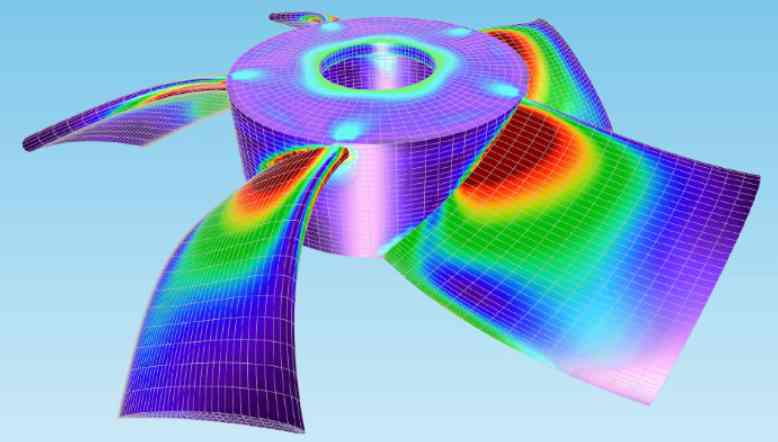
Course Overview:
Finite Element Analysis is a method of computational prediction that examines how things work out or behave under real forces like heat, vibration, and pressure. Mechanical engineers must be equipped with finite element analysis software such as ANSYS and ABAQUS in its application for structural engineering in order to ensure designs are structurally sound and optimized for performance.
Course Description:
- Stress Analysis: Learn how to analyze stress points in a design for its strength and durability, making use of the best finite element analysis software.
- Thermal Analysis: Understand the effects of heat flows on materials and structural integrity
- Dynamic Simulation : Study how components respond at different times to various forces like vibrations and impacts, with the support of renowned FEA best analysis software ANSYS and ABAQUS.
Practical Application:
Finite element analysis for design engineers is a design tool for a simulation by aerospace engineers in estimating stresses coming upon the wings of an airplane during its flight or the heat encountered by components in the engine. Using FEA, designers can predict failures and make necessary changes in designs before expensive physical testing.
Industry Relevance:
It is used in automotive, aerospace, defense, and manufacturing industries where safety and reliability are important. A trained engineer on ANSYS or ABAQUS, two of the best finite element analysis software options, could validate designs and troubleshoot the potential issues early in the design phase saving the companies time and cost.
3. Computational Fluid Dynamics (CFD)
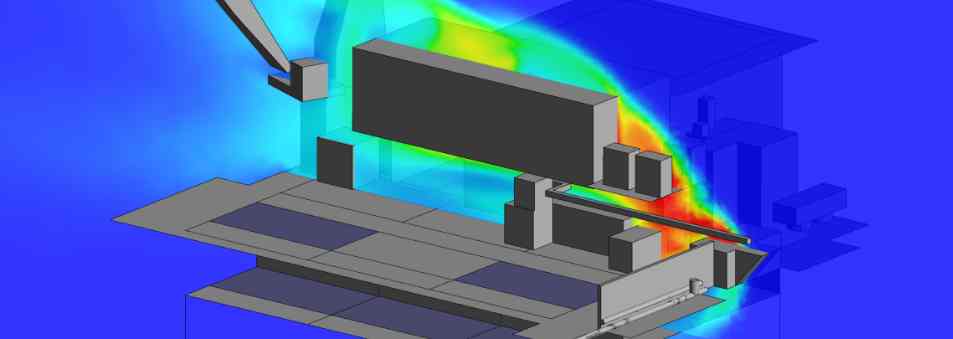
Course Overview:
Computational Fluid Dynamics (CFD) is another crucial tool for the mechanical engineer. CFD is utilized to model fluid flow, heat transfer, and chemical reactions. Engineers working in industries where the use of fluid dynamics is vital—such as the automotive, aerospace, and energy sectors must learn how to apply fluid dynamics modeling software like Fluent and OpenFOAM, as well as the best CFD analysis software on the market.
Course Description:
Flow Simulation: Understand how fluid flow is simulated around a structure or within systems like engines and turbines by using fluid dynamics modeling software.
Heat Transfer Analysis: Know the thermal behavior of the components in systems, especially HVAC application and an engine by using Autodesk CFD thermal analysis.
Turbulence Modeling: Analyze the interrelation of turbulence with fluid flow and methods for modeling it to achieve sound design with the best tools in CFD analysis software.
Practical Application
The role of CFD in the automotive engineer: In designing vehicles, it enables them to optimize airflow around the vehicle to increase fuel efficiency and enhance performance. For example, in aerospace, they use CFD analysis to calculate and model aerodynamic properties of aircraft in reducing drag and optimizing fuel consumption. Engineers with skills in CFD often work alongside mechanical design engineers who are undergoing certification courses.
Industry Relevance:
For industries in which a high fluid flow and heat transfer rate are of utmost importance, CFD is considered an essential one. Widespread application is found in HVAC design, aerospace, energy systems, and chemical processing. Only engineers able to use the fluid dynamics modeling software or Autodesk CFD thermal analysis have a chance to make substantially vital influences on product design if innovation, redesign, or research discovery demands improvements of cooling systems, aerodynamics, or fluid handling
4. Product Development and Design

Course Overview:
The product development focuses on the whole lifecycle of a product-from ideas generated to the actual product line. More and more, mechanical engineers are expected to know not just how to design a part, but also how it performs in the broader context of the whole product ecosystem and marketplace. The course requires engineers to balance design functionality with those of the needs of the customer, as well as cost constraints and manufacturability-making it one of the Best Design Courses for Mechanical Engineers.
Course Description:
Conceptual Design. Learning to take a product from an idea to a functional design is a must-have for all product design and development companies.
Prototyping: You will learn rapid prototyping techniques useful for testing and refining designs before full-scale production, very often provided through the means of product design and development services.
Design for Manufacturing: Learn how to design parts and assemblies that are easy and inexpensive to make, a critical element of mechanical engineering product development.
Hands-on Application:
In consumer electronics or medical devices, for example, the mechanical engineers have to design products not only functionally but aesthetically, easy to manufacture, and compliant with stringent regulatory standards. This class equips the engineer with all aspects of the product lifecycle right from designing through to market launch, an important step in innovative product design and development. Engineers trained under the Best Design Courses for Mechanical Engineers often add CFD skills to augment their capabilities in design.
Industry Relevance:
Product design and development companies are really significant in consumer goods, automotive, medical devices, and electronics industries. Engineers who can think of designing considering the needs at manufacturing and market levels are really coveted by companies such as Apple, Tesla, and General Electric.
Mastery of such skills in design courses for mechanical engineers affords professionals with the ability to offer the most up-to-date innovative products to the market. The Best Design Courses for Mechanical Engineers will give trainers invaluable lessons regarding these concepts, keeping engineers equipped and ready to meet industry demands.
5. Additive Manufacturing and 3D Printing
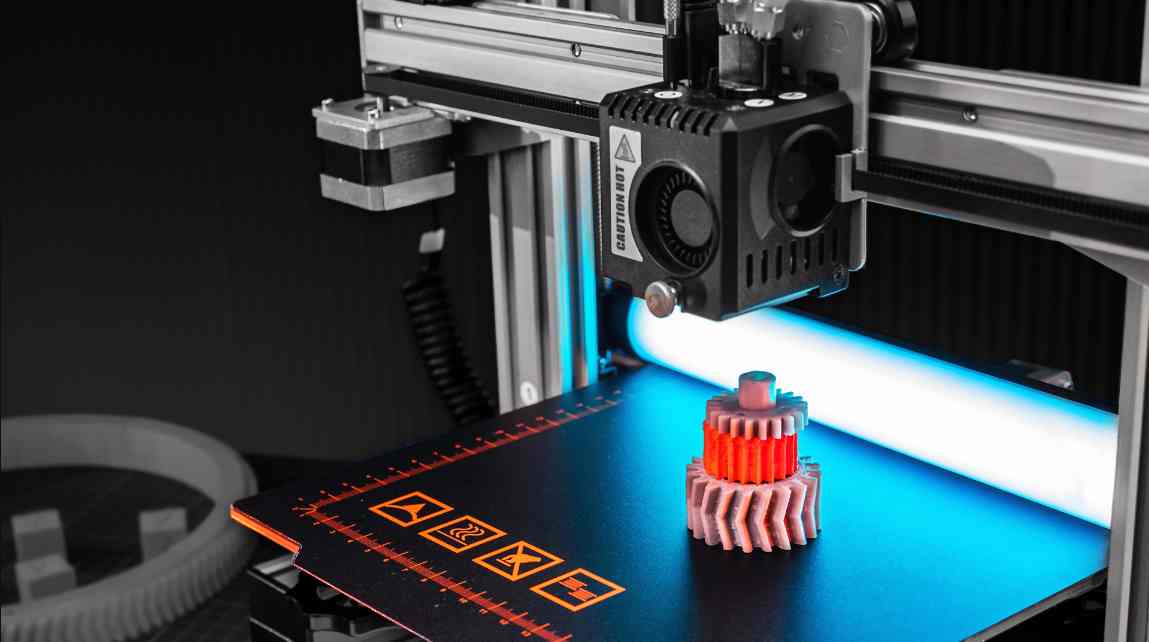
Course Overview:
It is sometimes referred to as additive manufacturing, also more popularly known as 3D printing. This technique revolutionizes the way things are manufactured and even enables engineers to produce geometries and structures of extremes that cannot be achieved by purely additive technologies. It also reduces weight.To become a modern mechanical engineer and earn a mechanical design engineer certification, an understanding of how 3D printing works and how to design for it will be required. Here are the Best Design Courses for Mechanical Engineers to learn this principle in detail.
Course Description:
- 3D Printing Technologies Various types of 3D printing tools, from FDM to SLA and SLS, the use of which is realized in various industries. The choice of best material used for 3D printing between metals, polymers, and composites for optimum 3D printing tool selection for a specific application.
- Design for Additive Manufacturing (DfAM): Get insights to design parts with additive manufacturing, considering how to reduce weight of parts; improve material efficiency; and address post-processing needs with a programme for designing 3D prints efficiently.
Practice application:
It is particularly useful for companies operating in aerospace, and automotive industries. Engineers find it useful to fast prototype parts or low-volume highly specialized components using the best 3D printer for engineering prototyping. Medical fields apply the 3D printing skills in creating custom implants and prosthetics tailored to the individual patient, putting the skills of mechanical system design and modeling to appropriate application. Some of these applications are largely discussed in the Best Design Courses for Mechanical Engineers.
Industry Relevance:
This 3D printing tool has immense additive manufacturing engineers' demand from the automotive, aerospace, healthcare, and industrial design sectors. Companies will innovate through the considerably reduced lead times and production costs combined with added design flexibility by being armed with technical knowledge of this 3D printing tool along with its capability to utilize the best 3D printer available for engineering prototyping. Mastering these skills through a mechanical design engineer certification would considerably advance career prospects in those industries. In fact, according to the Best Design Courses for Mechanical Engineers, mastering these skills through a mechanical design engineer certification can significantly advance career prospects in those industries.
6. Mechanical Design Engineering
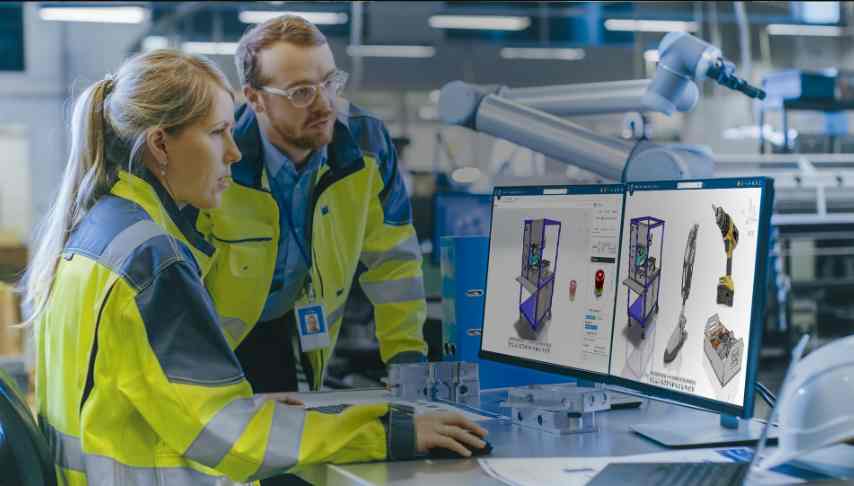
Course Overview:
The certification of mechanical design engineer is the most valuable step towards the consolidation of expertise in mechanical design. It indicates competence in designing and modeling mechanical systems, tools, and machinery-the vital areas in the automotive, aerospace manufacturing, energy, and other various fields. With the best online courses for mechanical engineers, you demonstrate that you not only have theoretical knowledge but also possess practical skills that make you stand out in the competitive marketplace.
Course Features:
- Comprehensive Mechanical Design Training: Gain in-depth knowledge of design principles, from concept to implementation, including areas like HVAC design engineer training.
- Industry-Standard Tools: Master key tools like CAD, FEA, and CFD software, as well as the best 3D rendering software for interior design to enhance your design capabilities.
- Project-Based Learning: Engage in real-world projects to apply design and modeling of mechanical systems theories and problem-solving techniques, simulating the actual challenges faced in industries.
- Certification Exam: Pass an industry-recognized exam to validate your skills and knowledge, including knowledge from an HVAC design and drafting course, making you more attractive to employers.
Industry Relevance:
A mechanical design engineer certification is highly regarded across various engineering sectors. It serves as a testament to your ability to design innovative, efficient, and functional systems. Certified engineers who have completed the best online courses for mechanical engineers are often prioritized for higher-level roles in mechanical design and development teams, leading to better job prospects and salary increases.
Companies value this credential as it indicates a strong foundation in mechanical design, including knowledge of HVAC design engineer training and HVAC design and drafting courses, combined with hands-on experience. Mastery of tools like the best 3D rendering software for interior design further expands opportunities in interdisciplinary projects.
The Best Design Courses for Mechanical Engineers is something that will help you obtain the skills and knowledge needed to dominate in this highly competitive field of mechanical design. By making sure these courses are mastered in mechanical design training, you will be quite a skillful mechanical engineer and give your career an additive boost.
Each course features unique tools and applications, so it's essential to choose the ones that align with your career aspirations, whether you focus on automotive design, aerospace systems, or industrial products. Investing in these best mechanical design courses will not only enhance your technical expertise but also open doors to valuable mechanical design certification courses that validate your proficiency in mechanical design.
Take the leap and embrace the opportunities these courses offer for your business growth and professional development. These are the 6 best design courses for mechanical engineers for business growth.


